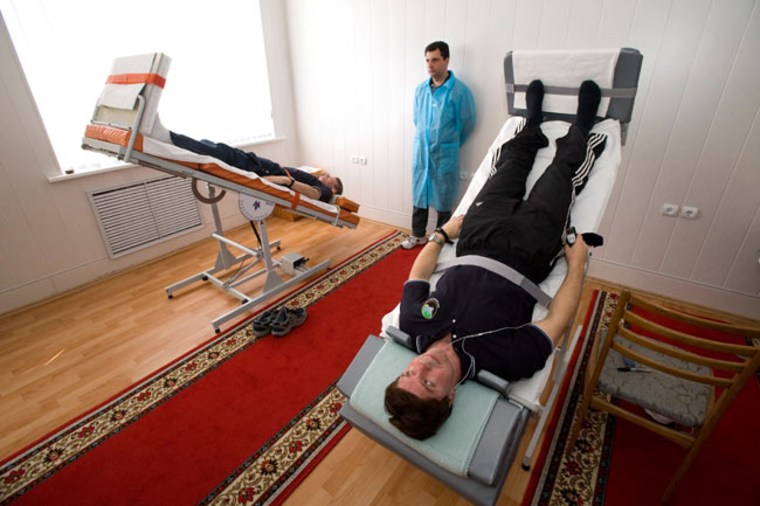He may not be zooming through space at warp speed on the Starship Enterprise, but astronaut Michael Barratt is the closest thing to a real-life Dr. McCoy aboard the international space station.
The doctor-turned-astronaut is spending more than half a year living 220 miles above Earth as the space station's chief medical officer. Barratt said the station's small medical suite is adequate, but is likely far less glitzy than the one used by Dr. Leonard McCoy, the chief medical officer of the fictional starship U.S.S. Enterprise in the "Star Trek" television series and films, the latest of which opens in theaters on May 8.
"It's not quite Dr. McCoy's sick bay, but it pretty much has what we would need to respond to the most common and most likely things here," Barratt said in a recent televised interview. "We haven't really had anything major on station, so I think we're pretty ready."
The real space doctor
Barratt should be ready. He literally helped write the textbook on spaceflight medicine —"Principles of Clinical Medicine for Space Flight" — and is the associate editor for space medicine for the journal Aviation, Space and Environmental Medicine.
A veteran of mountaineer and diver, Barratt spent nine years as a ground-based NASA medical officer and flight surgeon before deciding he wanted to experience the effects of spaceflight for himself. Space medicine, after all, includes the effects of high altitude and pressure on the human body, he added.
"I think I can perhaps do a little bit more good for my field of space medicine by experiencing it myself," Barratt said.
Aboard the space station, Barratt may not have McCoy's fancy equipment from the 23rd century, but he does have the right gear to treat scrapes, cuts and even broken bones, though the latter has never been needed, he said. If an emergency comes up that he may not have the tools for, Barratt said he can always call on a team of doctors in Mission Control.
Slideshow 12 photos
Month in Space: January 2014
"The forces that break bones, we don't have them up here. They tend to come from gravity and collisions," Barratt said. "You'd have to do something very severe and deliberate to break an arm up here."
Bone health and density is of vital importance for astronauts in space. Barratt and his two crewmates - Russian commander Gennady Padalka and Japanese flight engineer Koichi Wakata - exercise two hours ever day to preserve muscle and bone strength during the long months of weightlessness. They're also studying medical countermeasures that could reduce the loss of bone density while in space.
"We're testing an osteoporosis medicine that is used on the ground to see if works on the space station," Wakata said in a recent interview.
Space doctor showdown
While Barratt, like "Star Trek's" McCoy, is a dedicated and veteran physician, there are some key differences between the real-life space medic and his fictional predecessor.
Barratt joined NASA's astronaut ranks in 2000 after nearly a decade servicing as a flight surgeon for pilots and astronauts. He was 41 at the time, but had to wait nine more years before getting a post aboard the space station. Barratt launched to the space station in late March and celebrated his 50th birthday in orbit last month.
In his official "Star Trek" biography, Dr. Leonard McCoy won't be born for another 218 years (in 2227), but he will receive his chief medical officer post aboard Enterprise at age 39 (in 2266). Enterprise captain James Kirk gave McCoy the nicknames "Bones" and the space doctor developed an ongoing rivalry with Spock, the ship's half-Vulcan/half-human science officer. Barratt's middle name is Reed and he serves as both the station's medical officer and NASA science officer.
Barratt expects his mission aboard the space station to last about seven months, during which time he will live without gravity. McCoy served on the Enterprise's initial five-year mission, but had the luxury of artificial gravity.
McCoy was also divorced and had one daughter. Barratt is married and has five children. His wife Michelle and children watched him launch into space aboard a Russian Soyuz spacecraft in late March.
Barratt also has a reputation as a great cook, and routinely whipped up meals for his crewmates as they trained for launch, Wakata told reporters. There is also some comfort, he added, in having a trained physician in space watching over the station crew's health.
"Having a medical doctor on board really makes me feel relaxed," Wakata said.

